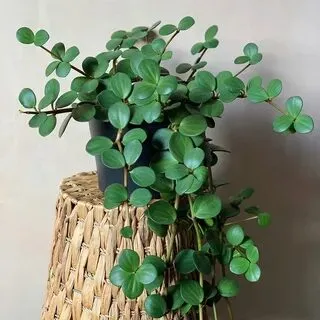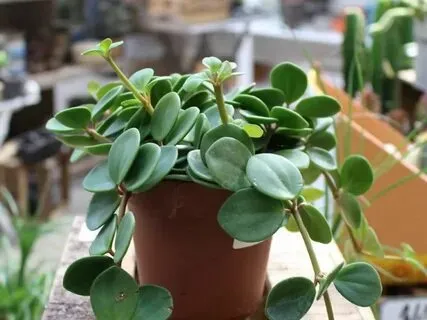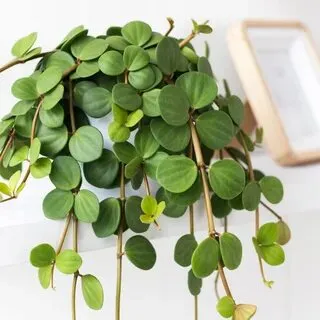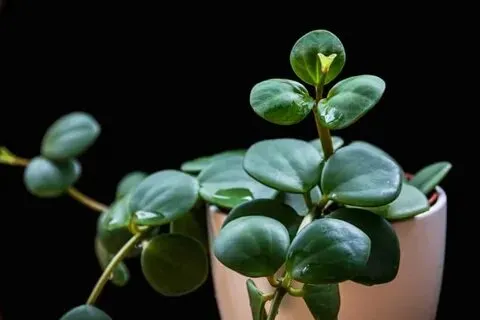How to Grow and Care for Peperomia Hope
Overview of Peperomia Hope
Peperomia Hope is a delightful and charming houseplant, popular among indoor plant enthusiasts for its unique appearance and relatively low maintenance requirements. Known for its trailing stems adorned with small, succulent-like leaves, this plant can add a touch of greenery to any space. This article will provide an in-depth guide on how to grow and care for Peperomia Hope, ensuring your plant thrives and remains healthy.
Understanding Peperomia Hope

Peperomia Hope is a hybrid plant that combines the best features of its parent species. It is often appreciated for its compact size and the delicate beauty of its round, fleshy leaves. Understanding the characteristics and care requirements of Peperomia Hope is essential for anyone looking to cultivate this plant successfully.
Unique Characteristics
One of the most distinctive features of Peperomia Hope is its small, round leaves that grow in clusters along the stems. These leaves are slightly succulent, allowing the plant to store water and survive in less-than-ideal conditions. Additionally, Peperomia Hope’s trailing nature makes it an excellent choice for hanging baskets or as a trailing plant in a mixed arrangement.
Peperomia Hope Care

Light Requirements
Peperomia Hope thrives in bright, indirect light. Too much direct sunlight can scorch its delicate leaves, while too little light can result in leggy growth and dull foliage. Placing the plant near a north or east-facing window with filtered light is ideal. If natural light is insufficient, consider using grow lights to supplement.
Pot Selection
Choose a pot with drainage holes to allow excess water to escape. Peperomia Hope’s roots are sensitive to standing water, so proper drainage is essential. Terracotta pots are a great option as they absorb excess moisture from the soil.
Best Soil Mix
The soil for Peperomia Hope should be well-draining to prevent root rot. A mix designed for succulents or cacti, often composed of peat moss, perlite, and sand, is suitable. This blend ensures that excess water drains away quickly while still retaining enough moisture for the plant.
Water Requirements
Watering Peperomia Hope correctly is crucial. Allow the top inch of soil to dry out between waterings. Overwatering can lead to root rot, while underwatering can cause the leaves to wilt. During the growing season, you may need to water more frequently, while in the winter, watering can be reduced.
Temperature and Humidity
Peperomia Hope prefers temperatures between 65°F and 75°F (18°C to 24°C) and does not tolerate cold drafts or sudden temperature changes. High humidity is beneficial, mimicking the plant’s natural habitat. Using a humidity tray or a room humidifier can help maintain the desired humidity levels.
Fertilizer
Feeding Peperomia Hope with a balanced, water-soluble fertilizer every four weeks during the growing season can promote healthy growth. Be sure to dilute the fertilizer to half strength to avoid over-fertilizing, which can damage the plant.
Pruning
Regular pruning helps maintain the shape and size of Peperomia Hope. Trim back any leggy or overgrown stems to encourage bushier growth. Pruning also helps remove any dead or damaged leaves, keeping the plant healthy and attractive.
Easy Steps to Grow and Care for Cupid Peperomia
Propagating Peperomia Hope

Method 1: Stem Cuttings (Most Successful)
What you’ll need:
- Sharp pruners or scissors (sterilized with rubbing alcohol)
- A healthy Peperomia Hope mother plant
- Well-draining potting mix
- Small pots (2-3 inches)
- Optional: Rooting hormone
Steps:
- Choose your stem: Select a healthy stem with at least 2-3 nodes (the bump where leaves grow).
- Make the cut: Using your sterilized pruners cut just below a node at a 45-degree angle. You can also remove the lower leaves to expose more nodes for root growth.
- Let it callus (optional): Some gardeners recommend letting the cut end develop a callus (a hardened protective layer) by leaving it out for 30 minutes to an hour.
- Potting up: Dip the cut end in rooting hormone (optional) and plant it in a pot filled with moist, well-draining potting mix. Make sure the nodes are buried slightly.
- Bright indirect light: Place the pot in a location with bright indirect light. Avoid direct sunlight, which can scorch the leaves.
- Water wisely: Keep the soil evenly moist, but not soggy. Overwatering is a common cause of failure.
- Be patient: Rooting can take several weeks. You’ll see new growth when roots are established.
Method 2: Leaf Cuttings (More Challenging)
What you’ll need:
- Sharp pruners or scissors (sterilized with rubbing alcohol)
- A healthy Peperomia Hope mother plant
- Well-draining potting mix
- Small pots (2-3 inches)
Steps:
- Pick a healthy leaf: Choose a plump, mature leaf.
- Cut it clean: Carefully cut the leaf from the stem, including a small petiole (leaf stalk) if possible.
- Planting the leaf: Lay the leaf flat on a pot filled with moist, well-draining potting mix. Gently push the petiole (if present) slightly into the soil.
- Bright indirect light and moisture: Place the pot in bright indirect light and maintain consistent moisture in the soil.
- Patience is key: Propagating from leaves can take months. You might see tiny plantlets sprouting at the base of the leaf instead of direct root growth.
Tips for Success:
- Use sterilized tools to prevent infection.
- Provide warmth (around 70°F) for optimal rooting.
- Consider using a humidity tray to create a slightly more humid environment, especially for leaf cuttings.
- Don’t fertilize newly propagated plants until they are established.
Potting and Repotting
Peperomia Hope does not require frequent repotting. Repotting every two to three years is usually sufficient. Choose a pot that is only slightly larger than the current one, with drainage holes to prevent water from accumulating at the bottom.
Common Pests & Plant Diseases
Peperomia Hope is generally resistant to pests and diseases, but it can occasionally be affected by spider mites, mealybugs, and aphids. Regularly inspect your plant and treat any infestations promptly with insecticidal soap or neem oil. Good air circulation and avoiding overwatering can prevent most fungal diseases.
Troubleshooting Common Problems

Yellowing Leaves
Yellowing leaves can be a sign of overwatering or poor drainage. Adjust your watering schedule and ensure the pot has adequate drainage.
Drooping Stems
Drooping stems might indicate underwatering or low humidity. Check the soil moisture and consider increasing the humidity around the plant.
Seasonal Care for Peperomia Hope
Different seasons bring different challenges for Peperomia Hope. In the winter, reduce watering and avoid cold drafts. During the summer, increase humidity and protect the plant from excessive heat. Understanding these seasonal care requirements ensures your plant remains healthy year-round.
Conclusion
Peperomia Hope is a beautiful and easy-to-care-for houseplant that can thrive in various indoor environments. By understanding its specific needs and providing the right conditions, you can enjoy the lush, green foliage of this charming plant for years to come. Follow the guidelines outlined in this article, and your Peperomia Hope will flourish, bringing a touch of nature into your home.
